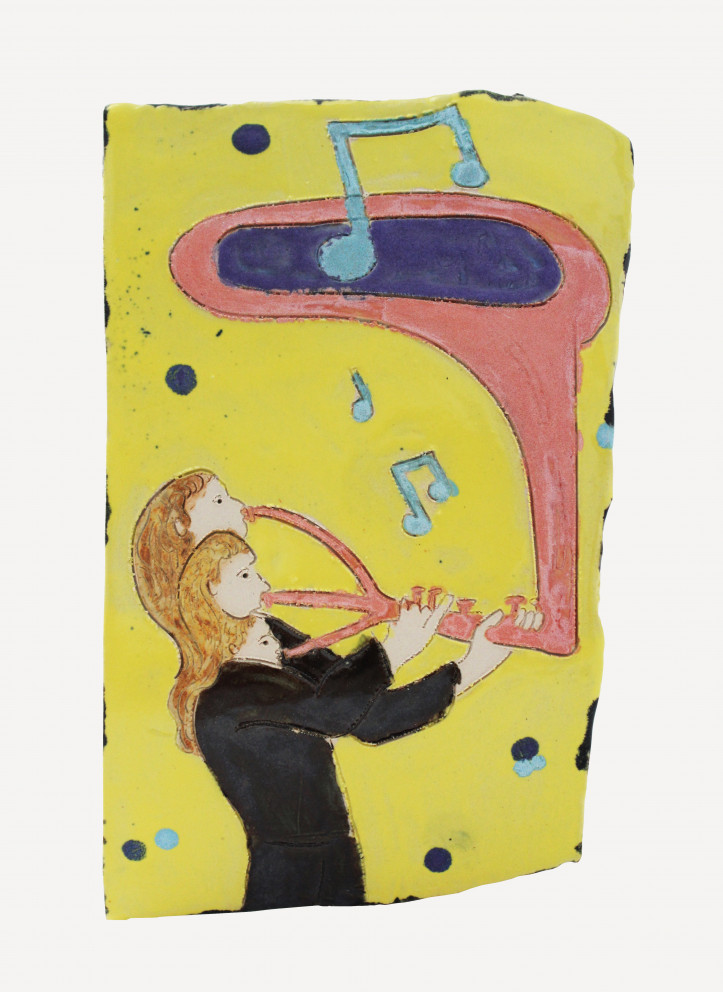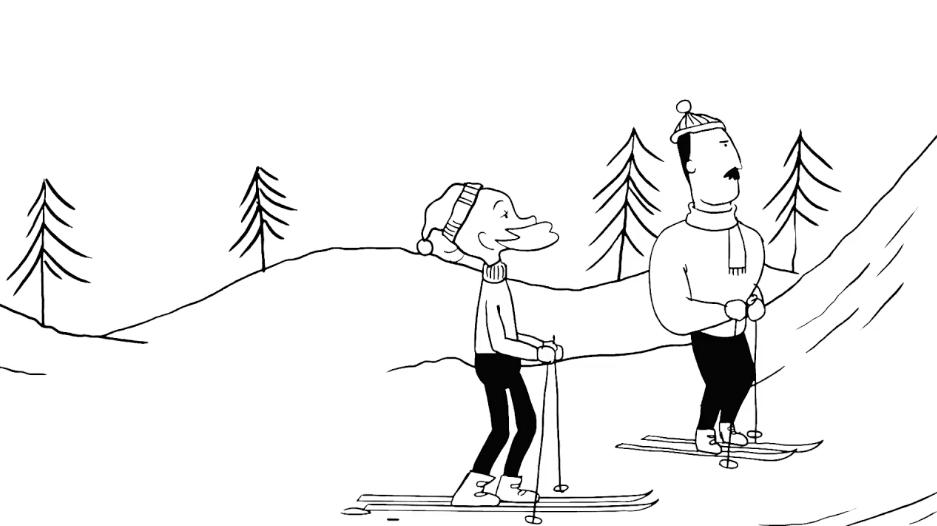
Listening to another person patiently and attentively is a dying skill. There are reasons why it should be revived.
Not so long ago, I attended a meeting of a local Bettors Anonymous (BA) group in Poland. One conversation dealt with everyday issues—someone had argued with their mother-in-law, another had been bored at work that day. One of the men talked for a quarter of an hour about the puppy he had recently brought home: what the dog ate, how it played, how many times a day it needed letting out. Though the story lacked action, no one tried to interrupt. We listened solemnly and without comment. The meeting was open. I went because I was working on a report about addiction, but I did not conceal this and was well aware of the main rule of the meetings—that none of the participants’ stories can leave the group. Apart from me, no new people had joined, thus there was no “powerful” story about falling into or beating addiction, typical for BA first-timers. I might have been bored. However, after the first hour I realized that I did not want to leave the hall. Time passed, but I didn’t feel like I was wasting it. I was surprisingly comforted listening to reports of everyday lives which lacked any dynamic punchlines. I was enthralled by the peace which surrounded us. Nobody interrupted anyone. No one showed even the slightest bit of impatience. There were no arguments, jibes, or stunts. I could not remember when I had last had such a seamless and calming time with others.
A Luxury Item
Over two thousand years ago, Zeno of Citium preached: “Nature gave us one tongue but two ears so that we may listen twice as much as we speak.” Today, however, his words are no longer remembered. “Sending” is preferred to “receiving.” As Kate Murphy writes in You’re Not Listening, “In modern life, we are encouraged to listen to our hearts, listen to our inner voices, and listen to our gut, but we are rarely inclined to listen carefully to other people with intent.”. In the book, the journalist discusses the dying art of listening—the fact that many have unlearned true dialogue and have become used to narcissistically proclaiming their own views. A lot is lost as a result. Listening to others and being listened to caters to the basic human needs of acceptance and being understood. A person who is not heard feels lonely.
I ask Murphy to consider the aforementioned situation from the meeting. “Can we only now experience valuable conversation within therapy?” I query. “Good conversation and good listeners are like luxury goods these days. We are missing these in our everyday lives,” the journalist replies. While writing You’re Not Listening, she asked people to recall when they had last been listened to in the way they wanted, and to try to name at least one good listener from among their social circle. Interviewees were also asked to explain what being a good listener means. “None of them, truly none, were able to answer. They went silent with surprise, got stuck,” says Murphy. Even those who were in stable relationships or surrounded by friends or close family admitted that no one knew how to listen to them. In search of comfort, many opted to pay for a therapist or coach to listen to them; some gave this role to their barber or beautician.
The journalist noticed, however, that her interviewees had no trouble listing the traits of a bad listener. Most often they mentioned behaviors such as interrupting mid-sentence, constantly checking one’s phone, fidgeting in one’s seat, or interjections unrelated to the topic of conversation. “I was sad to discover how many people had had bad experiences. People are more likely to feel ignored and misunderstood in conversation than they are to experience the satisfaction of being heard.”
Over and Out
When asked why the American South had produced so many great writers, including herself, the 1973 Pulitzer prize-winning writer Eudora Welty answered jokingly: “We had nothing else to do than simply sit on the veranda and chat. And so some of us began writing these stories down.” Murphy herself comes from Texas. Her childhood was spent surrounded by storytellers; she fondly recalls colorful neighbors and family who knew how to tell good stories. Often the same events related by different people took a very different course. For the future journalist, this was an important lesson—she quickly understood that just listening to many stories from different perspectives lets one form a fairly unbiased view. Thanks to this, she also caught the bug for conversation and learned the essential habit of attentiveness.
These days, there is not enough of this sort of chatting. Courtyard benches are rarely used. Garage driveways have replaced old verandas. People no longer sit down to talk to neighbors in the corridors of their apartment blocks, and the media and internet have, to a significant extent, replaced stories passed on by word of mouth.
Everyone independently records what happens to them: they take photographs, record videos, describe them, and then publish them online. “We’re becoming impatient. We don’t want oratory anymore; we want sound bites. And the art of conversation is being replaced—dangerously, I think—by personal broadcasting,” warns Julian Treasure, a business communications expert, who conducts workshops and writes books about the skill of listening. His most popular TED Talk has over fifty million hits and is in the top ten most watched. The problem is that when one turns to Google for advice on good listening, there are twice as many responses for information broadcasters (e.g., managers or salespeople) than tips on how to be a good listener.
“The art of listening is fading and we like to blame technology,” claims Murphy. It is true that apps and online activities are structured to distract. In addition, they lock one up in information bubbles, with people who share the same views. One can announce all of their thoughts to the world and shut out everything they do not agree with or understand. The opportunity to practice the art of discussion and attentive conversation with someone with different experiences or views is becoming increasingly rare.

A Noisy World
“Technology is not the only culprit,” Murphy tells me. “Other factors affect us too: upbringing, evolution, changes in brain function, cultural influences, political views and this entire noisy, contemporary environment.” The inability to listen, as Treasure highlights, is also linked to noise: “[…] most of the sound around us is accidental; much of it is unpleasant.” The buzz of a busy street or a pneumatic hammer, even the noise of a school corridor during break time are not things we should, or wish to, experience. (Although I must point out here that many teachers have told me how breaks in between lessons are far quieter now. In schools where the use of smartphones is permitted, students prefer spending time online than in conversation.) For this reason, Treasure notices, it is no longer enough to speak to catch someone’s attention—one must shout.
And so advertisements, newspaper and website headlines scream out at potential readers. All of this acts to desensitize individuals and deprive them of peace. In order to draw attention to a problem, today one must link it to some sound that breaks through the all-consuming cacophony and makes an impression on tired, impatient, over-stimulated brains. One example of this is the Women’s Strike in Poland. When in 2020 women used a controversial slogan with a curse word, this was the cry that broke through. A cry in the fight to finally be heard and listened to.
Deafened
People are increasingly having problems with listening not only in social contexts, but also on a physiological level. Hearing loss is currently the fourth-most common disability. According to the WHO, approximately 1.5 billion people in the world have hearing loss and by 2050 this disorder could affect up to 2.5 billion people—one in four. The natural aging process is only one of the possible causes of this phenomenon. External factors, over which one has limited influence, play an increasingly important role—hearing is strongly determined by diseases, noise, and toxins.
In Poland, around 20% of school-age children have hearing problems. The young use earphones almost constantly. They usually listen to music at 80-105 decibels. Add to this the noise level at concerts (110-120 dB) and school with its daily, regular bells (100-110 dB). Meanwhile, the WHO advises 70dB as the safe limit for human hearing and 35 dB is the recommended level for listening to music.
According to EU norms street noise should not exceed 60 dB, yet during rush hour it can reach 120 dB. A quarter of an hour in such conditions is sufficient to permanently damage hearing—a hammer drill can do so in thirty seconds. Drying one’s hair and vacuuming is harmful (up to 70 dB), as is blending soup, riding a motorcycle, and going to the cinema or a noisy restaurant. Regular, prolonged noise causes microscopic injuries to the ossicles, which, trying to protect themselves from excessive decibels, accumulate an additional layer of cartilage. This in turn makes them stiff and less effective.
A deterioration in hearing makes it difficult to establish contact with others. When one hears less, they become irritated and tired more easily, causing greater stress. Worsening hearing can also lead to depression.
What the Brain Likes
Hearing loss is an unavoidable part of the aging process. However, it turns out that there is also an inverse relationship—poor hearing may increase the risk of dementia and even the incidence of Alzheimer’s disease. This was discovered by Richard F. Uhlmann, Eric B. Larson, and Thomas S. Rees in 1989, and was further confirmed in research conducted by Frank R. Lin, Jeffrey Metter, and Richard J. O’Brian in 2011. In adults with hearing loss, problems with memory and cognition occur earlier and develop at a faster rate, even by as much as 30-40%.
The brain of a person with poor hearing has to work harder, as the processing of sounds is an activity it is constantly burdened with. This means that during normal cognitive tasks, such as the use of working memory, performance suffers. Impaired auditory signals can also accelerate the reorganization of the cerebral cortex, as well as cause atrophy of the entire brain, including in the areas responsible for semantic memory and sensory integration.
Fortunately this fairly unpleasant information may also have positive effects, as it suggests that one has some influence over how much and how severely they will age. In 2021 a team led by Joel Salinas from New York University’s Grossman School of Medicine Institute of Neurology published the results of research on how social interaction impacts the volume and cognitive function of the brain. The researchers examined whether and which social factors—love, good advice, attachment, listening, contact with loved ones—can prevent the degradation of cognitive function as a result of aging processes and disease-invoked changes, including dementia and Alzheimer’s. One of these factors was a clear frontrunner—active, attentive, and empathetic listening. The brain’s efficiency—including memory, speech, reasoning, and the ability to make decisions—was retained for longer and better in those who had contact with good listeners.
Attention Exercises
“A bad listener is not necessarily a harmful or boring person. Attentive listening is a skill which, like all others, requires practice,” Kate Murphy tells me. At the beginning, I try to exercise this skill using one of musician Marcin Dymiter’s online audio landscapes—a recorded urban walk that one can listen to. Without leaving the house, I end up somewhere near a noisy street. It is betrayed by the quiet but constant hum of vehicles. Suddenly, the sound of a car passing nearby emerges; first one, then another, and then several in a row. Soon these noises fade and the urban buzz is replaced by the chatter of birdsong. I “go” further. I hear the sounds of teenage girls shouting over each other and the piercing sound of a whistle; I can already tell that it’s a playing field. I return from the walk with one click on the keyboard.
In a video recording from the 2021 Lublin Workshops of Culture, Dymiter explains that the human brain is incapable of decoding all the acoustic information it is bombarded with. It selects some sounds and masks others. Thus it is sometimes interesting to make an audio recording of a walk. Listening to it later can help reveal elements that were overlooked the first time around, and can also assist in getting to know the environment more thoroughly, enhancing perception.
Julian Treasure, in turn, recommends daily attentiveness exercises, such as giving oneself a daily moment of silence of at least three minutes. Even if one doesn’t achieve perfect silence owing to noisy surroundings, auditory stimuli can be limited—a phone can be put on silent, music and TV turned off, windows and doors closed. Alternatively, when in a noisy space one can play the game of trying to single out sources of sound. At a cafe one can try to distinguish and focus on the sound of the espresso machine, the water pouring, chairs moving, a squeaking door. Another idea is to try to find rhythm in everyday noises. The dishwasher is running. The lift is going up and down in the stairwell. The air conditioning is humming. Try to hear the music in it—grasp the repetitiveness of the sounds and be taken over by it for a moment. Finally, in every conversation, even the most trivial, stick to the basic rules: be prepared to receive, not broadcast; summarize the stages of the conversation (“So you’re saying that…”; “And therefore…”; “I believe it went like this…”); ask additional, clarifying questions.
I ask Murphy how to check whether these exercises have, in fact, led me closer to becoming a good listener. “I suggest that after every conversation you ask yourself two questions: ‘What did I learn from my interlocutor? How did my interlocutor feel during our conversation?’ If you are able to answer both of these, that means you are on the right track to becoming a better listener,” she responds.










